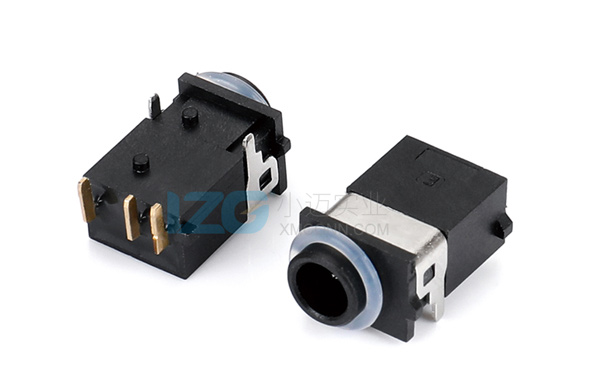With the continuous development of society and the constant updating of science and technology, DC socket pins are widely used in our daily lives. Before understanding how to wire DC socket pins, let's first understand the scope of use of DC socket pins. DC socket pins are used in various fields such as MP3, MP4, DVD, audio, digital cameras, digital cameras, vehicle remote controls, roll up door remote controls, mobile phones, telephones, car mounted telephones, building equipment, PDAs, televisions, microwaves, rice cookers, electric fans, electronic fat scales, electronic body scales, electronic kitchen scales, visual walkie talkies, monitors, electronic toys, etc.
Definition of DC power socket pins
A DC socket consists of three pins, with pin 1 representing the common pole, which means negative pole, and pins 2 and 3 representing the same pole, which is positive pole. Pin 2 uses internal power, and pin 3 uses external power.
During normal use, pins 2 and 3 are in a conductive state. With an internal power supply, when an external power supply is inserted, pins 3 and 2 are disconnected, and pin 3 is directly connected. The external power supply is supplied through pins 1 and 3, and pin 2 is now disconnected.

DC socket pin specifications
Different specifications of DC sockets have different wiring methods for their DC socket pins. Common DC socket specifications include 0.5mm, 0.7mm, 1.0mm, 1.1mm, 1.3mm, 1.65mm, 2.0mm, 2.5mm, 3.0mm, etc. During the use of DC sockets, it is necessary to pay attention to the protection of DC socket pins. The packaging of DC socket pins must be scientifically and reasonably designed to avoid deformation, looseness, tilting, scratches, poor electroplating, oxidation and rust, which may affect their normal use.
DC power socket wiring method
Firstly, the inner core is connected to the power input. Then the remaining two ends are connected to the positive and negative poles, as determined by the circuit of the device. Generally, the main circuit is composed of NPN polarity components. The circuit is grounded to the negative pole of the power supply, so the DC interface of these devices is grounded to the negative pole. Therefore, the outer shell of the power plug should be connected to the negative pole of the power supply, and the inner core should be connected to the positive pole.
The composition structure of DC power sockets
The structure of a DC socket generally consists of two parts, one is the socket body and the other is the plug. The socket body is a part fixed to the DC electrical appliance, which has a central hole and an outer ring. The central hole is used to receive the central pin of the plug, and the outer ring is used to contact the housing of the plug. A plug is the part connected to a DC power line, which has a center pin and a housing. The center pin is used to insert into the center hole of the socket, and the housing is used to fit the outer ring of the socket. When the plug and socket are fully connected, a closed circuit is formed, which enables the transmission of electrical energy between the DC power supply and DC appliances.



